Are you ready to elevate your dinner experience with a delicious homemade meat sauce? This versatile dish serves as the perfect base for various recipes, including spaghetti, lasagna, or even as a topping for baked potatoes. Making your own meat sauce allows you to customize flavors and control ingredients while enjoying the comforting aroma wafting through your kitchen.
In this article, we will guide you through crafting the ultimate meat sauce that packs a flavor punch. Our recipe combines high-quality ground meat with aromatic vegetables and rich tomatoes to create a hearty sauce that’s perfect for any occasion. Whether you’re preparing a quick weeknight dinner or hosting friends over the weekend, this meat sauce is sure to impress.
You’ll find detailed instructions on selecting the best ingredients and preparing your sauce step by step. Plus, we’ll share some serving suggestions and storage tips to ensure that you get the most out of your meal prep. Let’s dive into this culinary adventure that will transform simple dishes into mouthwatering meals!
Main Ingredients
To create an outstanding meat sauce, you need quality ingredients that will enhance flavor and texture. Here’s what you’ll need:
Ground Beef
Ground beef is the star ingredient in our meat sauce. For optimal taste and texture, choose ground beef with about 80% lean meat and 20% fat. The fat adds richness while keeping the beef tender during cooking. Aim for around 1 pound of ground beef for this recipe. You can also substitute it with ground turkey or chicken if you prefer a lighter option.
Olive Oil
Use about 2 tablespoons of extra virgin olive oil to sauté your vegetables before adding the meat. Olive oil not only enhances flavor but also helps create a rich base for your sauce. It brings healthy fats into the dish as well, making it a heart-healthy choice.
Onion
One medium onion will provide essential flavor in our meat sauce. Chop it finely so it can cook evenly and meld beautifully with other ingredients. Onions add sweetness when cooked slowly, which balances the acidity of tomatoes later on.
Garlic
Fresh garlic elevates any dish with its robust flavor profile. Use about 3 cloves of minced garlic in this recipe—this amount infuses the entire dish with aromatic goodness without overpowering other flavors.
Carrot
Adding one finely diced carrot contributes natural sweetness and depth to your meat sauce. Carrots are rich in vitamins and minerals too, making them a healthy addition while enhancing color and texture.
Canned Tomatoes
For a rich tomato base, use one 28-ounce can of crushed tomatoes or whole peeled tomatoes (crushed by hand). The acidity in tomatoes balances beautifully with the savory elements of ground beef and spices.
Italian Seasoning
A combination of dried herbs like oregano, basil, thyme, and rosemary adds complexity to your meat sauce. About 2 teaspoons of Italian seasoning will bring everything together harmoniously.
Salt and Pepper
Seasoning is crucial! Use at least 1 teaspoon of salt and half a teaspoon of black pepper initially; adjust according to taste later on during cooking.
How to Prepare Meat Sauce
Follow these detailed steps to prepare your delicious homemade meat sauce:
Step 1: Sauté Vegetables
Start by heating 2 tablespoons of olive oil in a large skillet over medium heat. Once hot, add one chopped onion along with one finely diced carrot. Sauté these vegetables for about 5-7 minutes until they become soft and translucent; stir occasionally to prevent sticking or burning. After onions are golden brown, add three minced garlic cloves to the pan; cook for an additional minute until fragrant but be careful not to let it burn as it can turn bitter quickly.
This initial step creates a flavor-packed foundation for your meat sauce by releasing their natural sweetness into the oil while providing aromatic layers that define an excellent dish.
Step 2: Brown Ground Beef
Next up is adding one pound of ground beef into your sautéed veggies within the skillet still on medium heat. Use a wooden spoon or spatula to break apart clumps as you cook it evenly until all sides are browned (about 8-10 minutes). Make sure there’s no pink remaining since undercooked beef may lead foodborne illness risks.
Once browned nicely incorporate salt (1 teaspoon) & black pepper (0.5 teaspoon) at this point—these seasonings enhance overall flavor immediately! Drain excess fat if necessary before proceeding onto next steps; some grease provides richness but too much will make it overly greasy!
Step 3: Add Tomatoes & Seasoning
Now it’s time for adding depth! Pour in one can (28 ounces) crushed tomatoes directly into skillet mixing them thoroughly together with beef mixture while scraping any bits stuck from bottom ensuring all flavors blend seamlessly together creating harmony throughout dish! Sprinkle 2 teaspoons Italian seasoning evenly across surface allowing spices absorb moisture effectively infusing every bite thereafter!
Let this mixture simmer gently uncovered—give yourself about thirty minutes at least stirring occasionally so nothing sticks/burns whilst allowing those delicious aromas fill room drawing everyone closer towards kitchen eager anticipation before diving into meal soon!
Step 4: Adjust Seasoning & Serve
After thirty minutes have passed check consistency—you want thickened slightly yet saucy enough coat pasta generously when plating! Taste-test carefully adjusting seasoning further if needed—add more salt/pepper based personal preference before turning off heat altogether letting everything rest few moments allowing flavors meld nicely once again last touch before serving!
Your homemade meat sauce is now ready! Pair it over al dente spaghetti or use as filling lasagna layers topped off mozzarella cheese baked until bubbly perfection awaits dinner guests eagerly awaiting first bite!
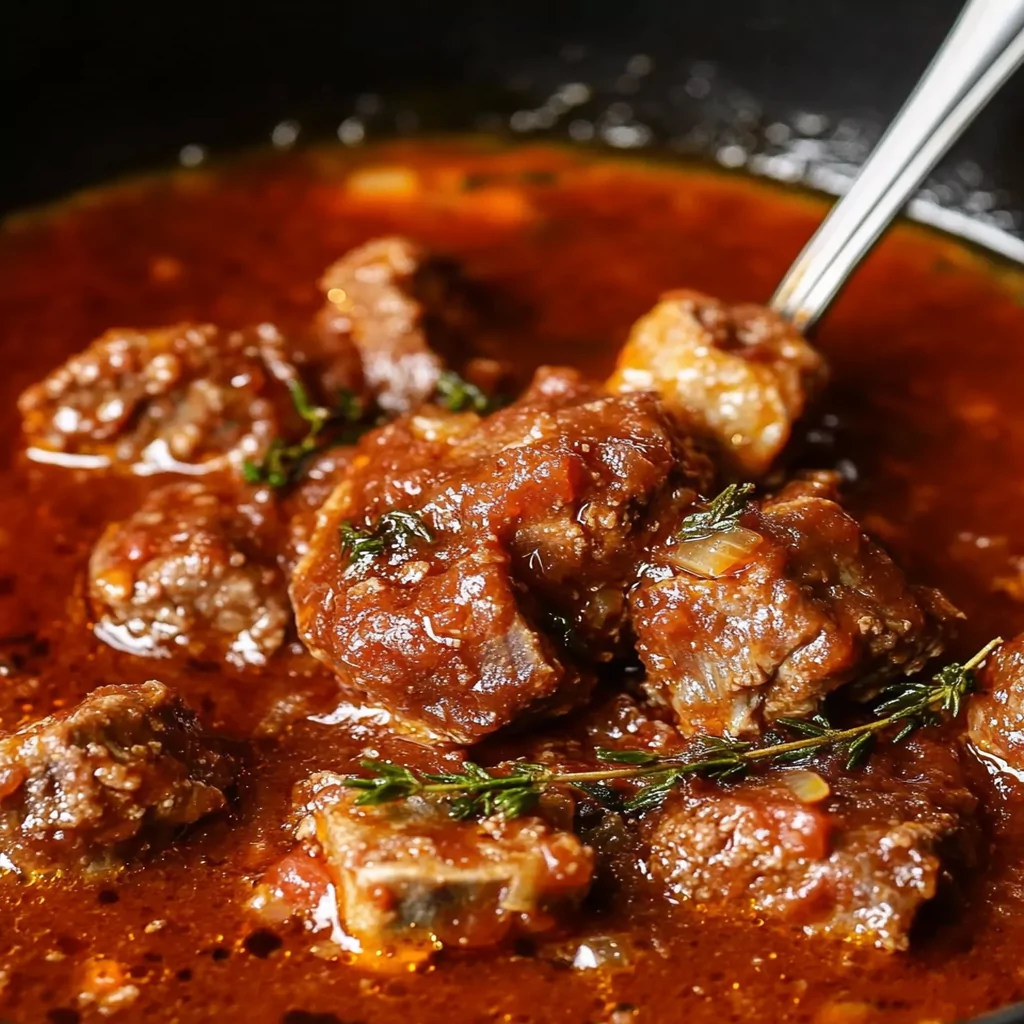
Serving and Storing Tips
Once you’ve prepared your delicious homemade meat sauce, consider these serving suggestions:
Serving Suggestions
Serve your freshly made meat sauce over al dente pasta like spaghetti or fettuccine for classic comfort food experience sure please everyone around table each time! Alternatively use within lasagna layering sheets along ricotta mixture sprinkled parmesan atop baking until golden brown bubbling edges enticing presentation highlight family gatherings special occasions alike!
For added twist serve alongside crusty bread dipped directly into warm bowls filled generous portions delightful goodness ensuring maximum enjoyment every single bite savored slowly shared amongst loved ones creating lasting memories throughout meal times spent together bonding over favorite dishes relished repeatedly!
Storing Tips
Allow any leftovers cool completely before transferring into airtight containers refrigerating them promptly enjoyed within three days maintaining optimal freshness throughout duration storing process preventing spoilage from occurring prematurely should keep well up five days total stored correctly without compromising taste integrity overall quality remaining intact when reheated appropriately afterward later week ahead quick easy meals prepared ahead busy schedules arise unexpectedly without sacrificing nutrition enjoyment factor!
For longer storage options freeze leftover portions placing them labeled freezer bags ensuring air expelled entirely sealing tight preventing freezer burn developing ultimately affecting flavor adversely down road thaw overnight refrigerator prior reheating enjoy again same satisfying experience found first time prepared originally savoring rich hearty warmth enveloping every bite cherished again future gatherings upcoming events planned—perfect opportunity share love cooking delights everyone appreciates wholeheartedly together once more soon too!
Mistakes to Avoid
When preparing meat sauce, it is essential to avoid common pitfalls that can compromise flavor and texture. One significant mistake is not browning the meat properly. Searing your meat creates a rich, deep flavor that enhances the overall taste of your sauce. Instead of tossing raw meat into your pot, take the time to brown it well over medium-high heat before adding other ingredients. This step can elevate your dish from bland to extraordinary.
Another common error is using canned tomatoes without seasoning or enhancing them. While canned tomatoes are convenient, they often lack depth in flavor. To remedy this, always season your tomatoes with salt, pepper, and fresh herbs like basil or oregano. This simple adjustment will ensure your meat sauce has a vibrant taste profile.
Additionally, many cooks rush the simmering process. A good meat sauce requires time for flavors to meld together. Simmering for at least 30 minutes allows the ingredients to marry and develop a rich consistency. If you cut this time short, you risk having a sauce that tastes flat or one-dimensional.
Finally, neglecting to balance acidity can lead to an unpleasant taste in your sauce. Tomatoes are naturally acidic, so adding a pinch of sugar or a splash of red wine can help neutralize this acidity. Make sure to taste as you go! Experimenting with these adjustments will allow you to create a well-rounded meat sauce that wows everyone at the table.
Tips and Tricks
Creating an exceptional meat sauce involves more than just following a recipe; it requires attention to detail and some handy tips and tricks. First, consider layering flavors by adding aromatics like onions, garlic, and carrots early in the cooking process. Sauté these ingredients until they become soft and fragrant before introducing the meat. This method builds a flavorful base that enhances the overall character of your sauce.
Using quality meats also makes a significant difference in your final dish. Opt for ground beef that contains some fat content or mix different types of ground meats such as pork or veal for added richness. The fat contributes moisture and enhances flavor, ensuring your meat sauce is juicy rather than dry.
Don’t overlook the benefits of slow cooking! If you have time, let your meat sauce simmer on low heat for several hours either on the stovetop or in a slow cooker. This extended cooking time allows flavors to deepen and intensify beautifully. As it simmers gently, stir occasionally to prevent sticking and help distribute flavors evenly throughout the pot.
Lastly, think about finishing touches when serving your meat sauce over pasta or other dishes. A sprinkle of freshly grated Parmesan cheese adds a delightful creaminess while also elevating visual appeal. Additionally, consider garnishing with fresh basil leaves for both color and aroma—this small detail can make your meal feel restaurant-worthy!
Suggestions for Meat Sauce
To make your meat sauce stand out even more, consider incorporating vegetables for added nutrition and texture. Adding finely chopped bell peppers or mushrooms can enhance flavor complexity without overwhelming the dish’s primary focus—the meat itself. These additions not only amp up health benefits but also improve overall mouthfeel.
Experimenting with different types of herbs can also yield exciting results in flavor profiles. While traditional recipes often call for basil and oregano, try incorporating thyme or rosemary for an unexpected twist that complements the richness of your meat sauce beautifully.
Another suggestion is adjusting the thickness of your sauce according to personal preference. For those who enjoy a thicker consistency, let it simmer longer uncovered to allow excess liquid to evaporate. Conversely, if you prefer a looser sauce, add a splash of broth or pasta water during cooking until you reach your desired consistency.
For an extra layer of flavor complexity, consider deglazing your pan after browning the meat by adding wine or broth before adding other ingredients. This technique captures all those tasty browned bits stuck at the bottom—known as fond—and incorporates them into your sauce.
Lastly, do not forget about storage! Meat sauces freeze beautifully; simply cool completely before transferring them into airtight containers for future meals. Label them with dates so you can easily keep track of freshness—making weeknight dinners easier than ever!
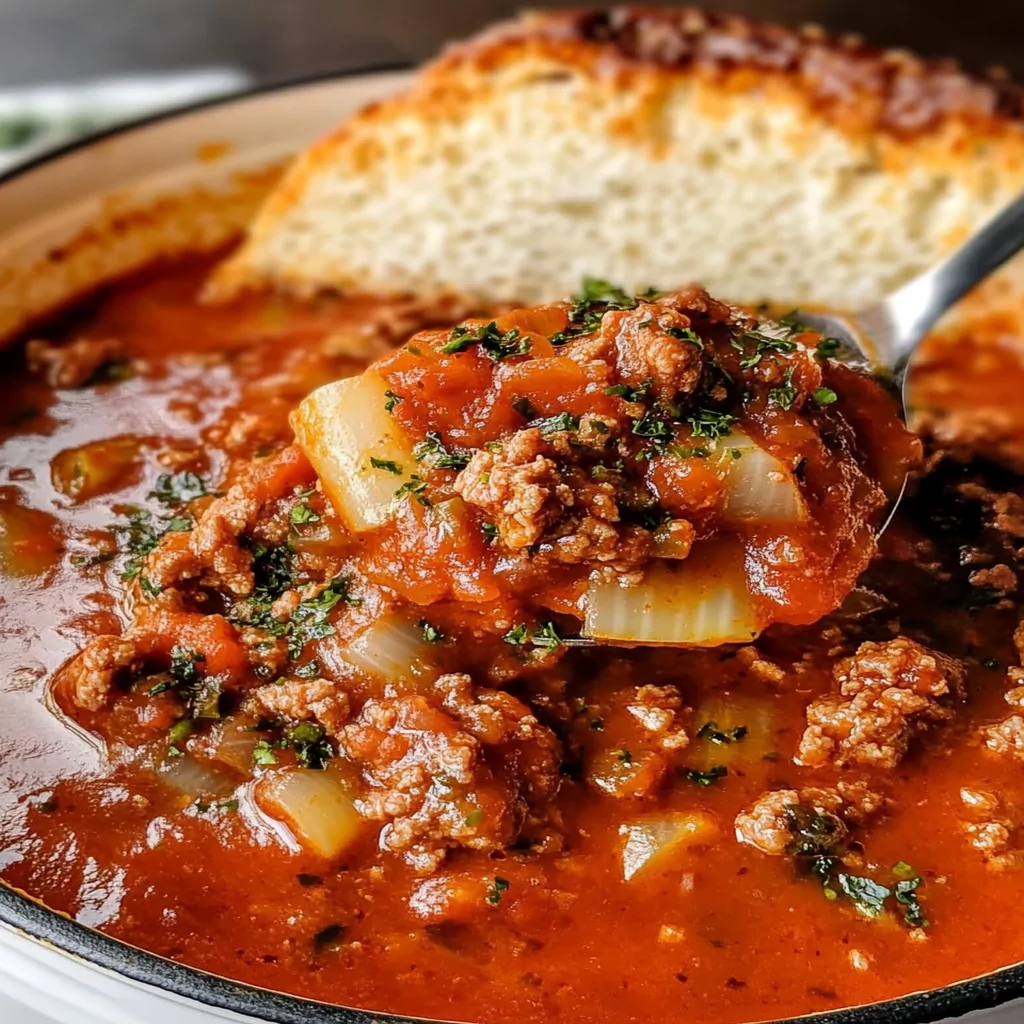
FAQs
What is the best type of meat for making Meat Sauce?
The ideal choice for making meat sauce usually involves ground beef due to its robust flavor and fat content which enriches sauces effectively. However, mixing different meats such as pork or veal creates depth in taste while balancing textures perfectly—offering variety in each bite! For those looking for healthier options, lean turkey or chicken can also be used but may require additional seasoning since they tend toward milder flavors compared to fattier cuts.
How long should I simmer my Meat Sauce?
Simmering time can greatly impact how well flavors develop within your dish! Ideally aim for at least 30 minutes on low heat; this allows spices and aromatics ample opportunity to meld together harmoniously resulting in rich full-bodied flavors throughout every spoonful served up later on pasta night!
Can I add vegetables to my Meat Sauce?
Absolutely! Vegetables not only enhance nutritional value but contribute textures that complement meats beautifully when blended seamlessly into sauces like these! Chopped carrots bell peppers onions mushrooms are all excellent choices—just make sure they’re finely diced so they cook down properly without overpowering primary ingredients within each bite enjoyed!
How do I store leftover Meat Sauce?
To store leftover meat sauce securely without compromising quality simply allow it cool completely then transfer into airtight containers before refrigerating up-to three days maximum freezing could extend shelf-life significantly allowing enjoyment weeks later just remember label clearly date-wise so there’s no confusion when pulling from freezer!
What should I serve with Meat Sauce?
Meat sauces pair wonderfully with various dishes beyond traditional pasta! Consider serving alongside polenta crusty bread baked potatoes even as part-of layered casseroles pizzas too—all providing unique experiences showcasing versatility enjoyed across multiple cuisines!
Can I make Meat Sauce ahead of time?
Yes absolutely making ahead saves valuable prep-time during busy weeknights while enhancing flavor profiles through marinating overnight letting spices infuse deeply into every ingredient used! Just reheat gently on stovetop adjust seasoning if necessary then enjoy tantalizing aromas filling kitchen again!
Conclusion
In summary, creating an outstanding meat sauce hinges on avoiding common mistakes while embracing helpful tips that elevate its quality significantly! Remember always brown meats thoroughly enhance canned tomatoes with proper seasonings allow adequate simmering times balance acidity by experimenting with sugar/wine blends—and explore using various herbs/vegetables ensuring depth complexity throughout each batch prepared! Storing leftovers securely extends enjoyment beyond initial servings making meal planning simpler too—all contributing towards crafting memorable culinary experiences shared around tables everywhere! Enjoy this delightful dish knowing every aspect reinforces tradition creativity within kitchens worldwide today!
Print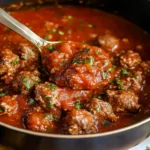
Meat Sauce Recipe
- Prep Time: 15 minutes
- Cook Time: 40 minutes
- Total Time: 55 minutes
Description
This homemade meat sauce is rich, flavorful, and perfect for pairing with pasta or as a lasagna filling. With a perfect balance of savory ground beef, sweet vegetables, and aromatic herbs, it’s sure to become a family favorite.
Ingredients
- 1 lb ground beef (80% lean)
- 2 tbsp extra virgin olive oil
- 1 medium onion, chopped
- 3 cloves garlic, minced
- 1 carrot, finely diced
- 1 (28 oz) can crushed tomatoes
- 2 tsp Italian seasoning
- 1 tsp salt
- ½ tsp black pepper
Instructions
- Sauté Vegetables: Heat olive oil in a large skillet over medium heat. Add the chopped onion and diced carrot. Sauté for 5-7 minutes until softened. Add minced garlic and cook for another minute.
- Brown Ground Beef: Add ground beef, breaking it apart as it cooks. Brown for 8-10 minutes until no pink remains. Drain excess fat if needed.
- Add Tomatoes & Seasoning: Stir in the crushed tomatoes and Italian seasoning. Simmer uncovered for 30 minutes, stirring occasionally.
- Adjust Seasoning & Serve: Taste the sauce and adjust salt and pepper. Once thickened, remove from heat and let it rest before serving over pasta or using as a lasagna filling.
Notes
- You can substitute ground beef with turkey or chicken for a lighter option.
- If the sauce is too thick, add a little water to reach your desired consistency.

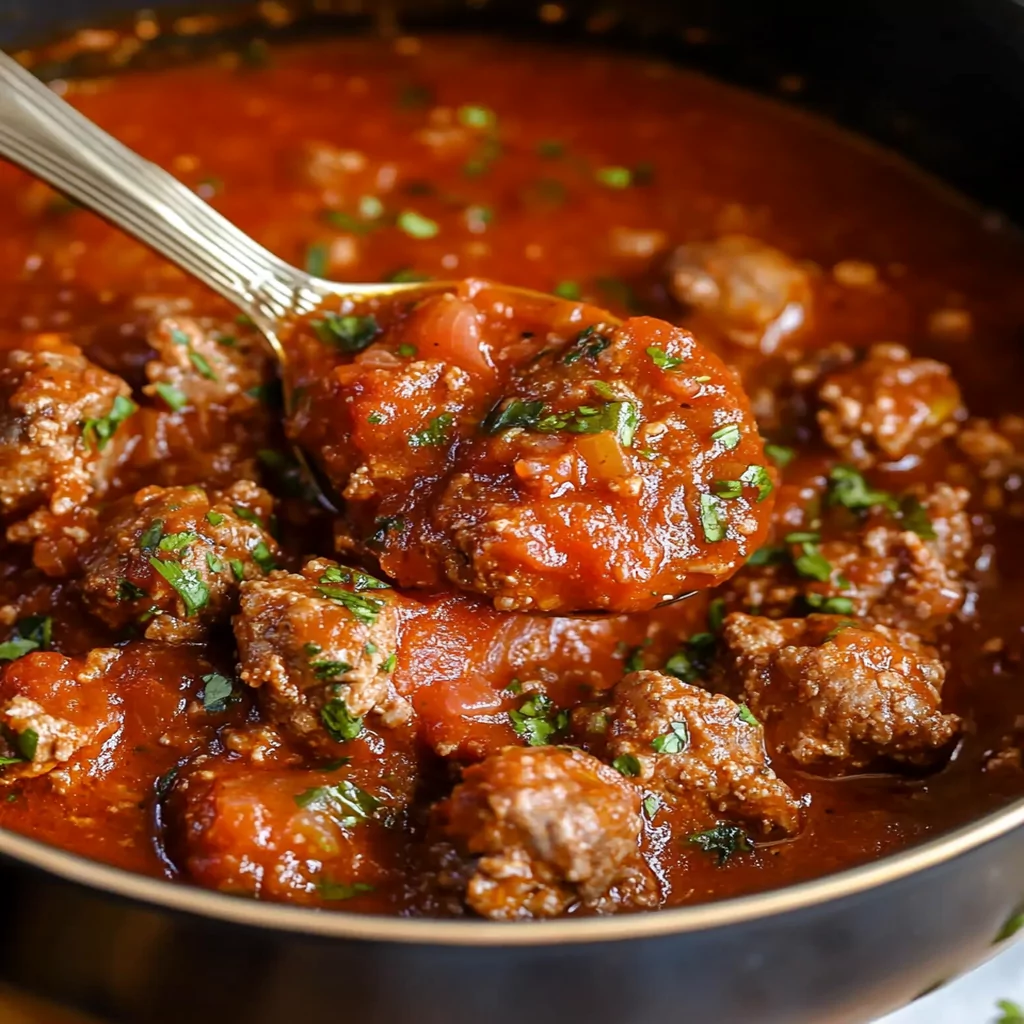
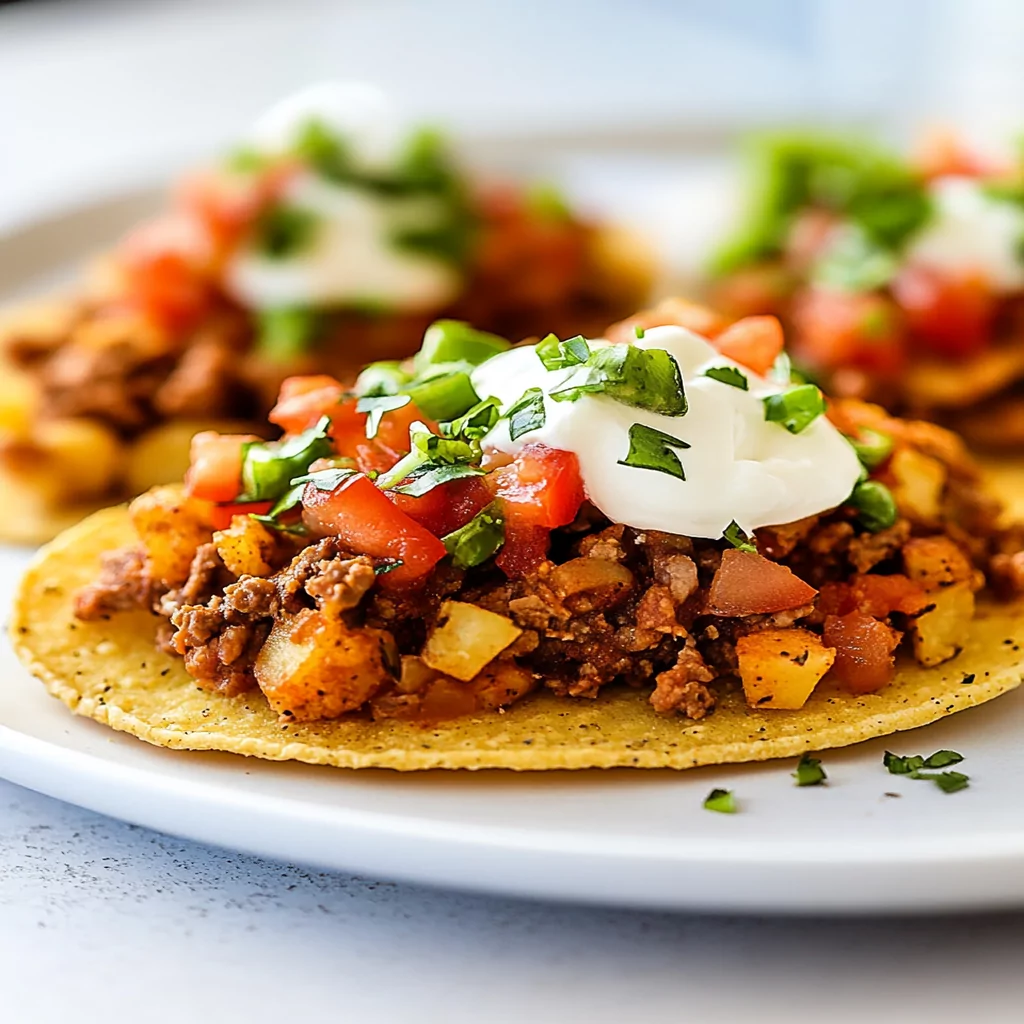


Leave a Comment